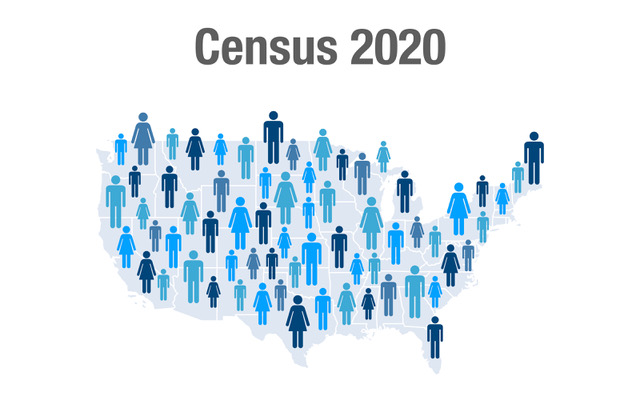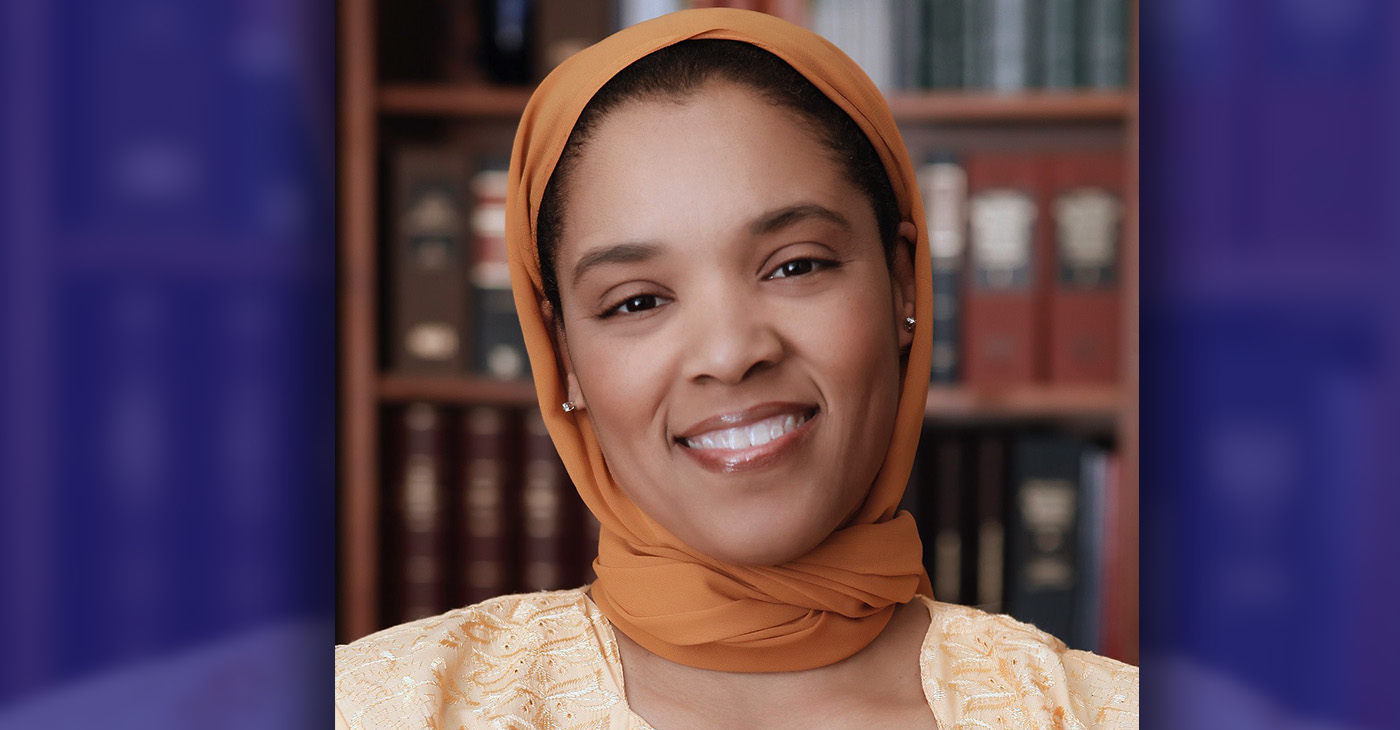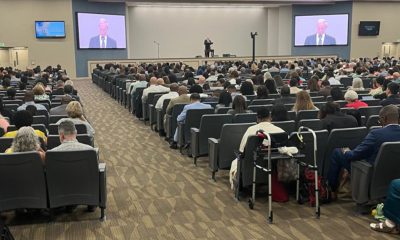Census
New Census Data Shows Changing Complexion of California; Political Power Shifts
Those numbers also determine how – and how much — state and federal funding will be allocated to counties and cities in the state.

The U.S. Census Bureau announced its first local level findings from the 2020 data collection cycle on August 12.
The new numbers — which drill down to provide demographic information at the county, city and block levels — reveal that California is more multiracial, more urban and facing population shifts that will likely lead to redrawing the boundaries of the state’s congressional and legislative districts.
Based on estimates the Census Bureau released in April, California is already losing a seat in the United States House of Representatives for the first time in the state’s 171-year history, bringing the state’s congressional delegation down to 52 members. That loss of one seat will also equate to a decline in the amount of federal funding California receives every year.
Since August of 2020, the 14 members of the California Citizens Redistricting Commission have been working on the once-in-a-decade project of redrawing the lines of the congressional, state Senate and Assembly and State Board of Equalization districts. There are five Democrats, five Republicans and four people who are not members of either party serving on the commission.
“The redistricting data provides population counts as well as demographic characteristics of ethnicity, race and voting age at all levels of geography,” said James Whitehorne, chief of the Redistricting and Voting Rights Data Office, U.S. Census Bureau. “While the primary purpose of these data is for states to redraw their districts, these statistics will also tell us how many people live in each city, each county and each block.”
Those numbers also determine how – and how much — state and federal funding will be allocated to counties and cities in the state.
Based on the numbers, most of the changes coming to the state’s legislative districts are expected to happen where there has been population increases, slow growth or a loss of residents – areas in the rural northernmost regions of the state and in Southern California counties around or below Los Angeles. Growth across the Los Angeles area, for example, over the last 10 years has been slow, but some cities like Irvine in Orange County are now among the fastest-growing in the country.
Over the last 10 years, the complexion of California has changed significantly. Driven mostly by population growth among Hispanics, the state joined Hawaii, the District of Columbia and New Mexico as places in the United States where whites are no longer the majority. The state’s Hispanic population grew from 37.6% in 2010 to 39.4 % in 2020 while the white population dropped from 40.1% to 34.7%.
The state’s Black population has also seen a decrease of 2.7% from a little over 6 % to 5.7%. The current total Black population is now 2,237,044.
California is also the second-most diverse state after Hawaii, according to the Census Bureau.
“As the country has grown, we have continued to evolve in how we measure the race and ethnicity of the people who live here,” said Nicholas Jones, director and senior advisor of Race and Ethnic Research and Outreach, Population Division, U.S. Census Bureau.
The Census Bureau implemented a significant change to the 2020 census data collection. It used two separate questions to gather an additional layer of ethnic information besides the usual inquiries on race and Hispanic origin. For example, if a participant identified as Black or African American, there was also an option to specify nationalities like Jamaican, Haitian, Nigerian, Ethiopian Somali, etc.
“The improvements we made to the 2020 census yield a more accurate portrait of how people self-identify in response to two separate questions on Hispanic origin and race. Our analysis of the 2020 census results show that the U.S. population is much more multiracial and more racially and ethnically diverse than what we measured in the past.”
Across the U.S., the results showed that the white population remained the largest in the country at 204.3 million with an additional 31.1 million identifying as mixed in combination with White. The multiracial population comprised the second-highest population for the first time at 49.9 million alone or combined, surpassing the Black or African American population at 46.9 million.
The U.S. population is now 57.8% white, 18.7% Hispanic, 12.4% Black and 6% Asian.
There were several other notable findings shared by the bureau during the presentation. The U.S. population is currently 331.4 million people, an increase of 22.7 million over the past 10 years. The 7.4% increase is the second-lowest growth rate in history.
Overall, national population growth was centered around urban areas over the last 10 years. California is home to three of the top 10 largest cities in the country. San Jose stands at No. 10 with a population of 1.01 million (a 7.1% increase), San Diego is at No. 8 with 1.4 million people (a 6.1% increase), and No. 2 on the list is Los Angeles with 3.8 million residents (a 2.8% increase).
For the first time ever, all cities in the top 10 (with the highest populations) have over 1 million people.
According to the Census Bureau this first release of local redistricting data is in a legacy format that will be easier for experienced data analysts to navigate.
“In September, we will release the exact same data in a far more user-friendly format that people are familiar with and will allow for easier searching,” said Jones.
Visit census.gov for more detailed information, charts, and analysis.
Activism
Black Californians Among Those Discovering American Indian Lineage
The Dawes Act of 1887 gave each tribal family head 160 acres of land and each single person 80 acres. The government would hold the land title in a trust for 25 years, after which each individual would receive United States citizenship and a “fee simple” land title. Under this law, Black tribal members, known as Freedmen, were granted approximately 2 million acres of land.

By Lila Brown, California Black Media
A growing number of Black Americans, relying on newly digitized federal records and other sources, are discovering direct bloodlines to Native American ancestors. These discoveries are inspiring individuals to trace and claim their Native ancestry, leading some to apply for citizenship with tribal nations.
When 32-year-old Daniel Bruce Kelly, an actor and minister, began researching his genealogy, he was sure that he would identify a family origin in Africa.
He identifies as African American and says he was determined to prove his parents wrong. They had begun discovering, exploring and embracing their European and Native American ancestry.
In his research, Kelly discovered that his great-great-great-grandfather was registered as Cherokee on the Dawes Roll, a United States government record listing individuals eligible for Indigenous tribal citizenship.
Kelly also identified other family members listed as Indian on U.S. Census Bureau records.
“At first, I was offended that my parents didn’t want to claim to be African, but then I had this awakening. You can’t talk about Native American history without talking about the Black American Indians,” Kelly said.
Similarly, Cameron Lewis, a truck driver from Sacramento, says he always heard family members talk about having “Indian in the family.” Delving into family documents, he found out that his great-great grandfather acquired land in the mid-1800s in areas of Florida inhabited by Seminoles.
“I found it hard to believe that whites would sell hundreds of acres of land to Blacks in the South during slavery,” he said. “This was when I started coming across terms I was not familiar with, describing my ancestors as ‘mulatto’ and ‘intransigent,’ and linking them to tribes such as the Yamasee, Catawba, and Creek — terms I’ve never even heard of.”
The Dawes Act of 1887 gave each tribal family head 160 acres of land and each single person 80 acres. The government would hold the land title in a trust for 25 years, after which each individual would receive United States citizenship and a “fee simple” land title. Under this law, Black tribal members, known as Freedmen, were granted approximately 2 million acres of land.
In Oklahoma’s Creek Nation, about a third of the land was Black-owned.
While the Emancipation Proclamation was signed by President Abraham Lincoln in 1863, slavery in the continental United States did not fully end as a legal institution until June 14, 1866, when the Creek Tribe agreed to abandon enslavement of African Americans. That was the day after Congress approved the Fourteenth Amendment.
Recent efforts to recognize historical injustices against Native Americans have seen progress. Last month, during Native American Heritage Month, Gov. Gavin Newsom issued a Proclamation celebrating the unveiling of a monument dedicated to California Native peoples at the State Capitol.
While this progress is appreciated, many Black Native Americans feel that the history of their Black freedman ancestors remains largely overlooked.
“We have to tell the whole of the story,” said Cherokee Nation Principal Chief Chuck Hoskin Jr. in 2022 during the 70th annual Cherokee National Holiday.
“We have to acknowledge that we enslaved African Americans under our own law. If we ignore or suppress that, we do to Freedmen and their descendants the same things that has been done to Cherokee people. Any nation is a stronger nation if they tell their whole story: the tragedy, the triumph, and the chapters that are dark and difficult,” added Hoskin.
According to the 2020 U.S. Census, approximately 1.4 million Californians identify as fully or partially American Indian and Alaskan Native. California also has the largest Native American population in the country, with close to 900,000 Native residents.
A population map commissioned by the Cherokee Nation in 2013 shows that California has the second-largest Cherokee population in the country after Oklahoma, where many displaced American Indians settled after the Trail of Tears in the 1830s.
In 2021, the Cherokee Nation Supreme Court removed the phrase “by blood” from its constitution. That change acknowledges that the descendants of Black people once enslaved by the tribe, the “Cherokee Freedmen,” have the right to citizenship, which means they are eligible to run for tribal office and to access other resources.
However, debates about who is — and who is not — Native continue.
For example, the great-great-great-grandmother of Kiori Jordan-Marquering, 46, of Santa Rosa, who was known as “Indian Julia,” was denied acceptance into the Choctaw Nation based on her appearance.
“She is visibly Negro,” the space reserved for “office use” on her application form noted.
“My ancestor’s application for citizenship was contested in court for more than three years before ultimately being denied,” says Jordan-Marquering.
Only the Cherokee Nation and the Seminole Tribe of Florida recognize Freedmen as eligible for citizenship.
This resource is supported in whole or in part by funding provided by the State of California, administered by the California State Library in partnership with the California Department of Social Services and the California Commission on Asian and Pacific Islander American Affairs as part of the Stop the Hate program. To report a hate incident or hate crime and get support, go to CA vs Hate.
#NNPA BlackPress
How Mitsubishi Will Survive – AutoNetwork Reports 365 – Auto Talk Show
Auto Talk show How Mitsubishi Will Survive – Jeremy Barnes, Sr. Director, Communications, and Events will discuss Mitsubishi now, electrification, the future, and how Mitsubishi remains relevant. Latest Automotive News and Car Reviews AutoNetwork Reports. Our panel discusses news from Toyota, Nissan, Buick, MBUSA, Ford, and more. Weekly car reviews and automotive news of interest. […]
The post How Mitsubishi Will Survive – AutoNetwork Reports 365 – Auto Talk Show appeared first on BlackPressUSA.

https://youtube.com/watch?v=1fpDYGl3tlQ&autoplay=0&cc_lang_pref=en&cc_load_policy=0&color=0&controls=1&fs=1&h1=en&loop=0&rel=0
Auto Talk show How Mitsubishi Will Survive – Jeremy Barnes, Sr. Director, Communications, and Events will discuss Mitsubishi now, electrification, the future, and how Mitsubishi remains relevant.
Latest Automotive News and Car Reviews AutoNetwork Reports. Our panel discusses news from Toyota, Nissan, Buick, MBUSA, Ford, and more. Weekly car reviews and automotive news of interest. We help you better understand and appreciate the auto industry. Find out why they would buy the vehicle or not. Join our panel of auto journalists influencers as we discuss this and simplify the latest auto industry news to help you appreciate the auto industry business. 365
The post How Mitsubishi Will Survive – AutoNetwork Reports 365 – Auto Talk Show appeared first on BlackPressUSA.
Bay Area
Bay Area Activist Seeks Congressional Seat in Newly Formed District 8
Last year, the California Black Census and Redistricting Hub pushed the California Citizens Redistricting Commission to draw a new congressional district to create consolidate the voting power of these diverse communities based on the results of the 2020 U.S. Census. (The new district now spans the I-80 corridor across Contra Costa and Solano counties, including Richmond, El Cerrito, Pittsburg, Vallejo, Fairfield, and a portion of Antioch, is the most diverse in the region.)

By Troy Finley
Cheryl Sudduth, a Bay Area community organizer and international negotiator, is seeking election as the first U.S. Representative for California’s new 8th Congressional district. She is challenging incumbent Democratic Congressman John Garamendi.
Last year, the California Black Census and Redistricting Hub pushed the California Citizens Redistricting Commission to draw a new congressional district to consolidate the voting power of these diverse communities based on the results of the 2020 U.S. Census.
(The new district now spans the I-80 corridor across Contra Costa and Solano counties, including Richmond, El Cerrito, Pittsburg, Vallejo, Fairfield, and a portion of Antioch, is the most diverse in the region.)
The commission agreed to the community concerns and ended up creating the only district in the entire state with at least 15% Latino, Black, white, and Asian populations. But it is also a district with areas of historically underserved and under-resourced communities and schools – where residents throughout struggle to find affordable housing, good paying jobs, public transit, and ongoing environmental hazards.
The five oil refineries located in the new district have large impacts on the local economy and public health of the local communities but can seem a world away from the Napa and Sonoma wine country. It is also a district that Garamendi believes he doesn’t have to reside in to represent it.
Once the new district was created, the next goal was to recruit a local person of color to represent it. Enter Cheryl Sudduth, a local community leader and government contracting officer… a candidate for the new seat.
As a multiethnic, multicultural, multilingual woman with disabilities, experienced in international contracting and environmental sciences, she fit the mold exactly.
“It was never in the plan to run,” said Sudduth. She was traveling back to the Bay Area from a water conference and got a call she never expected.
The campaign for Congress was a long shot from the start. “People were saying, she seems ‘fine’ but Congressman Garamendi is a veteran politician and someone who looks like me, who speaks like me, who moves like me could never get elected over him…maybe next time,” Sudduth recalls.
However, I believed then – as I do now – that the toughest fights are always worth taking on,” she said. “I’ve always been told that government only works when people, everyday people like you and me, raise our voices and demand change.
“Our communities have been so ignored,” she said, “I just feel like it’s our responsibility to show up and stand up for us against this continued effort to bring in people who do not live here yet always want to govern our communities.”
Her campaign has mostly been staffed with volunteers – Millennials, Gen Xers, lots of women. She has made a point to reject corporate donations and relies solely on small donors; nearly 70% of her campaign funds came from individual contributions under $200.
Despite Garamendi’s proclamation that it isn’t ‘legally required’ to live in the district, Sudduth believes that his perspective reflects the out-of-touch nature of the current Congress and the sort of nepotism that seems to thrive within the Democratic machine that believes it a perfectly suitable system that a community which is 70% people of color has never had a person of color represent them on the federal level.
“Our political differences are mainly on issues of economic and racial justice,” she said. “He wants to represent us but doesn’t want to live among us? That’s why he’s not effective for us. He doesn’t have a stake in the game.
“I do have the advantage of being able to connect with the people of the community,” she said. She lives in the district near industry, which gives her firsthand experience with income inequality, housing and homeless issues, educational inequities, and racial injustices. “Frankly, anyone who doesn’t live in the district, hasn’t sent his children to our schools, spent with our small businesses and pay taxes here regularly, doesn’t drink our water or breathe our air, cannot possibly represent us.”
Suddoth believes she has a gift “resolving issues. So, every position I’ve held from Sony to Siebel/Oracle and Goodwill, AbilityOne, U.S. President’s Commission for People who are Blind or Disabled and Mattson Technology and now AC Transit, my elected office and appointed commissions, creating thousands of federal jobs, building housing, establishing healthcare programs – I have consistently delivered award winning solutions and community resources by focusing on the fix and not just the fight.
She also has direct experience in international contracting, having lived and worked in over a dozen countries managing and negotiating contracts in nine languages, in water and wastewater, in the environmental sciences, in creating jobs and overseeing fair housing projects, and equity advocacy.
Suddoth and members of her campaign are grateful for the many people who have endorsed her including ILWU Local 10, PEU 1, LAAAWPAC, former San Francisco Mayor Willie Brown, former Richmond Mayor Irma Anderson, former Oakland Mayor Elihu Harris, and hundreds of elected, appointed officials and commissioners.
-

 Arts and Culture3 weeks ago
Arts and Culture3 weeks agoRooted in Tradition: The Intricate History of Black Hair Braiding
-

 Bay Area4 weeks ago
Bay Area4 weeks ago“I Will Not Be Bullied,” Says Oakland Mayor Sheng Thao
-

 Bay Area2 weeks ago
Bay Area2 weeks agoPG&E Increases Rates While Bay Area Households Are Struggling to Stay Afloat
-

 Business3 weeks ago
Business3 weeks agoGov Newsom: Raising Fast Food Minimum Wage to $20 Pays Off as Jobs Multiply in Industry
-

 Activism4 weeks ago
Activism4 weeks agoOpponents of Mayor Sheng Thao Are Calling on Her to Resign Following FBI Raid
-

 Community1 week ago
Community1 week agoHundreds Come to Jehovah’s Witnesses’ Assembly Hall for Three-Day Program of ‘Good News’ in Fremont
-

 Bay Area2 weeks ago
Bay Area2 weeks agoJuneteenth Mass Shooting Suspect Charge with Multiple Counts of Felony Assault by Alameda County DA Pamela Price
-

 Activism4 weeks ago
Activism4 weeks agoOakland Coliseum Sale to AASEG: A Model for Community Development and Inclusion


















































